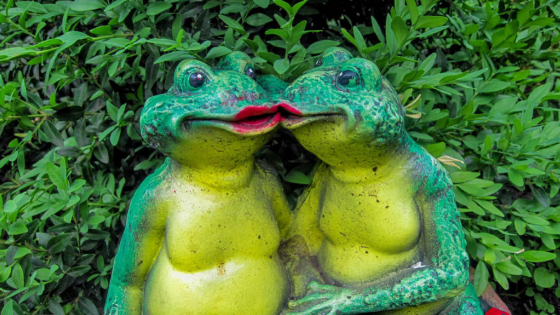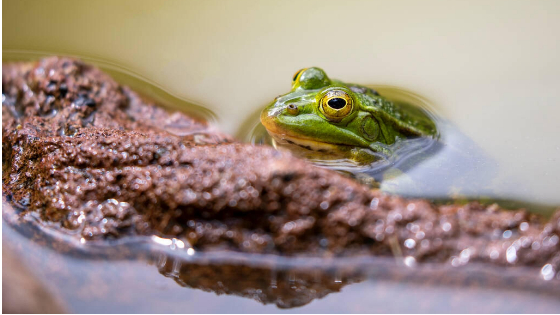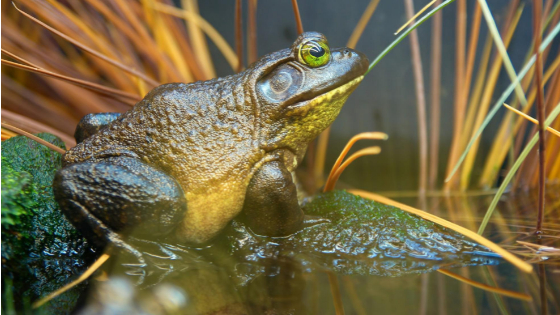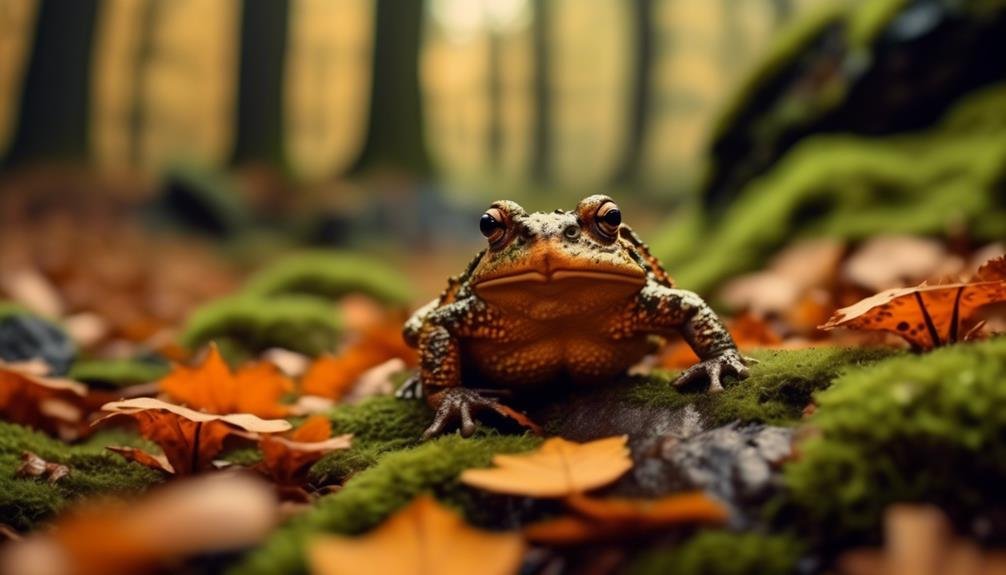
Welcome to the intriguing realm of American toads, where a world of captivating discoveries awaits. These amphibians, with their fascinating life cycle and diverse range of subspecies, offer a wealth of insights into the natural world.
From their ancestral invasion from South America to their hybridization patterns with woodhousii toads, American toads have a rich biogeographical history that predates the formation of the Isthmus of Panama land bridge.
As we delve into the various subspecies, such as the Eastern American toad and the Dwarf American toad, we will uncover the unique characteristics and survival strategies that make them thrive in their habitats.
Prepare to be enthralled as we embark on this enthralling journey, where the captivating world of American toads unfolds before our eyes.
Key Takeaways
- American toads undergo a fascinating metamorphosis process, changing physically from tadpoles to adults with spots, warts, and parotoid glands.
- The successful completion of the American toad’s life cycle ensures the continuation of their population.
- American toads have biogeographical origins from South America and likely arrived through rafting, leading to their widespread distribution.
- Eastern American toads and Dwarf American toads are two distinct species within the American toad family, each with their own unique characteristics and habitat requirements.
Life Cycle of American Toads
The life cycle of American toads encompasses various stages, from the hatching of tadpoles to the metamorphosis into adult toads.
American toad tadpoles hatch from eggs within a span of 2-14 days. These tadpoles are characterized by their skinny tails and black bodies. They undergo a rapid development process, reaching adulthood in just 50-65 days.
After metamorphosis, the toadlets migrate to higher ground. During their tadpole stage, they feed on microscopic bugs, ants, spiders, slugs, and worms.
This transition from tadpole to adult is a critical phase in their life cycle. It is during this process that their physical appearance undergoes significant changes, including the development of spots, warts, and parotoid glands.
The successful completion of this life cycle ensures the continuation of the American toad population.
Biogeography and Migration Patterns
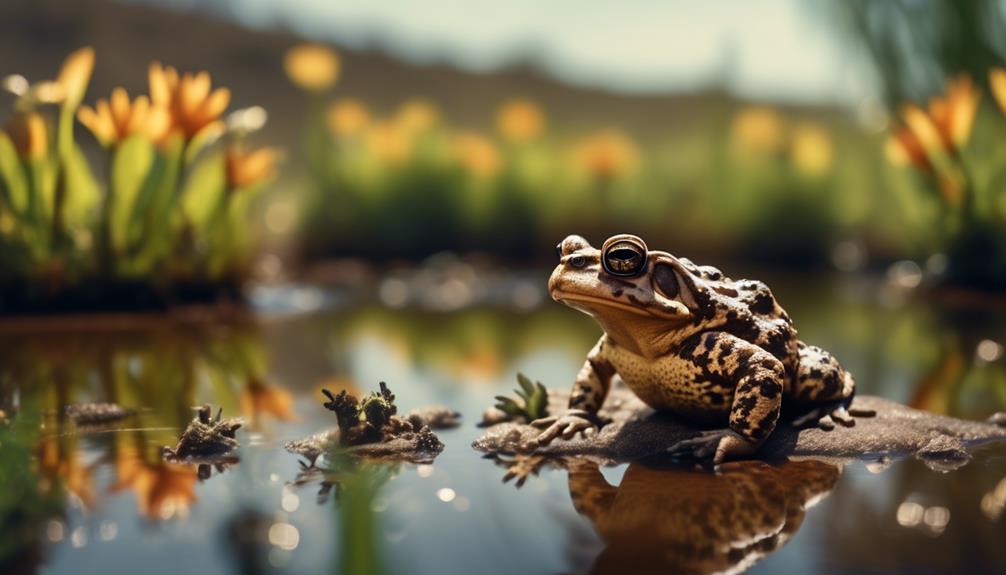
Biogeography and migration patterns play a crucial role in understanding the distribution and movement of American toads. To fully comprehend these aspects, consider the following:
- Range expansion: American toads are descendants of an invasion from South America that occurred before the formation of the Isthmus of Panama land bridge. They likely arrived through rafting, which explains their widespread distribution across North America.
- Hybridization: American toads tend to hybridize with woodhousii toads in overlapping ranges. This interbreeding can lead to variations in color and pattern among the toads.
- Habitat preferences: Eastern American toads require semi-permanent freshwater ponds, dense vegetation, and a steady supply of insects for survival. In contrast, dwarf American toads, which are smaller versions of American toads, can be found in the southwestern portion of the American toad’s range.
- Seasonal movements: During breeding season, both male and female toads migrate to breeding sites such as ponds or wetlands. After metamorphosis, toadlets may migrate to higher ground, seeking suitable habitats for adulthood.
Understanding these biogeographic and migration patterns allows researchers to gain valuable insights into the ecology and conservation of American toads.
Fascinating Subspecies of American Toads
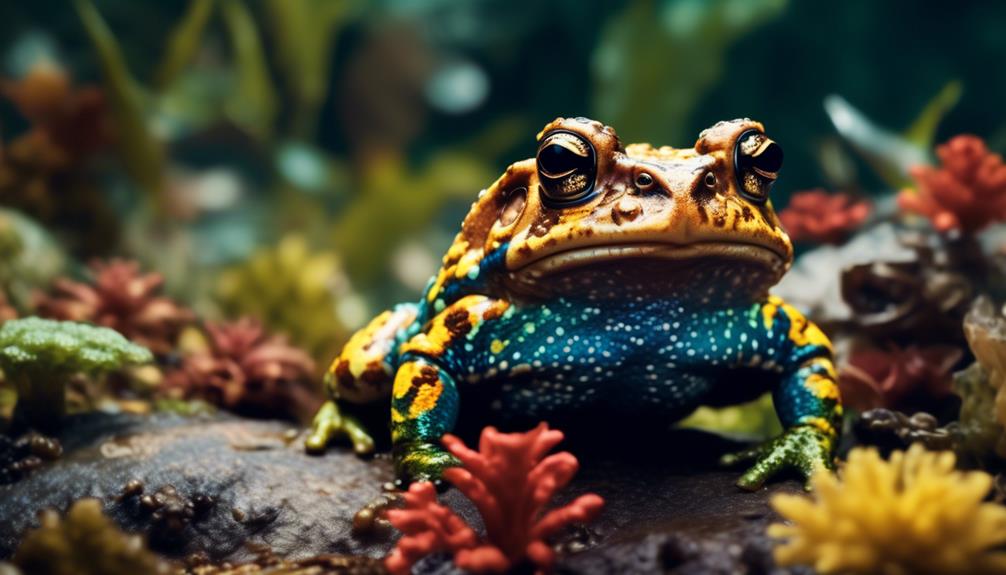
One intriguing aspect of American toads is the presence of fascinating subspecies within their population.
One such subspecies is the Eastern American toad. These medium-sized toads range in size from 5-9cm and display a variation in color and pattern, especially in females. Breeding males emit a high trill call lasting 6-30 seconds. Eastern American toads are characterized by their spots, warts, and parotoid glands. They require semi-permanent freshwater ponds, dense vegetation, and insects for survival.
Another subspecies is the Dwarf American toad, which is a smaller version of the American toad, reaching lengths of about 6cm. They have a dark reddish color with reduced or absent spots, and some specimens may display a white dorsal line on their backs. The ventral surface or belly is usually cream colored with a few dark spots. Dwarf American toads overlap with the southwestern portion of the American toad’s range.
The Eastern American Toad
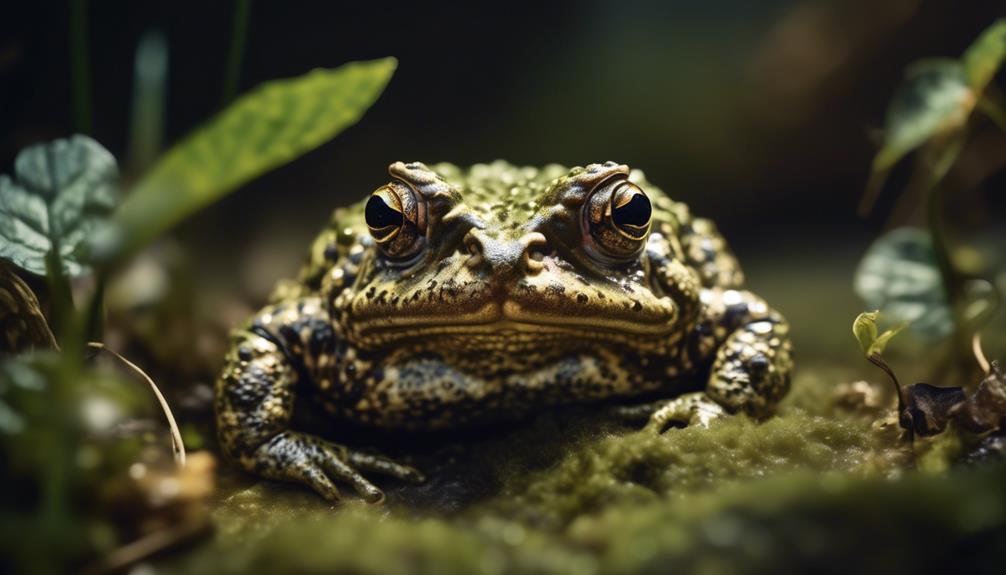
The Eastern American toad, a fascinating subspecies within the American toad population, exhibits unique characteristics and specific requirements for survival. To help you understand the distinct features of this toad, here are four key points:
- Size and Appearance: Eastern American toads are medium-sized, typically ranging from 5 to 9cm in size. Their color and pattern can vary, especially in females. They have spots, warts, and parotoid glands, which are raised structures behind their eyes that secrete toxins for defense.
- Breeding Call: During the breeding season, male Eastern American toads produce a high trill call that can last from 6 to 30 seconds. This distinctive vocalization helps attract females and establish territories.
- Habitat Requirements: These toads require semi-permanent freshwater ponds with dense vegetation for breeding. These ponds provide suitable environments for egg-laying and tadpole development. In addition, Eastern American toads rely on insects as their primary food source.
- Geographic Distribution: Eastern American toads can be found in the eastern United States, ranging from the Atlantic coast to the Great Lakes region. They inhabit a variety of habitats, including forests, fields, and suburban areas.
Understanding the unique characteristics and habitat requirements of the Eastern American toad is crucial for their conservation and appreciation in the fascinating world of American toads.
The Dwarf American Toad
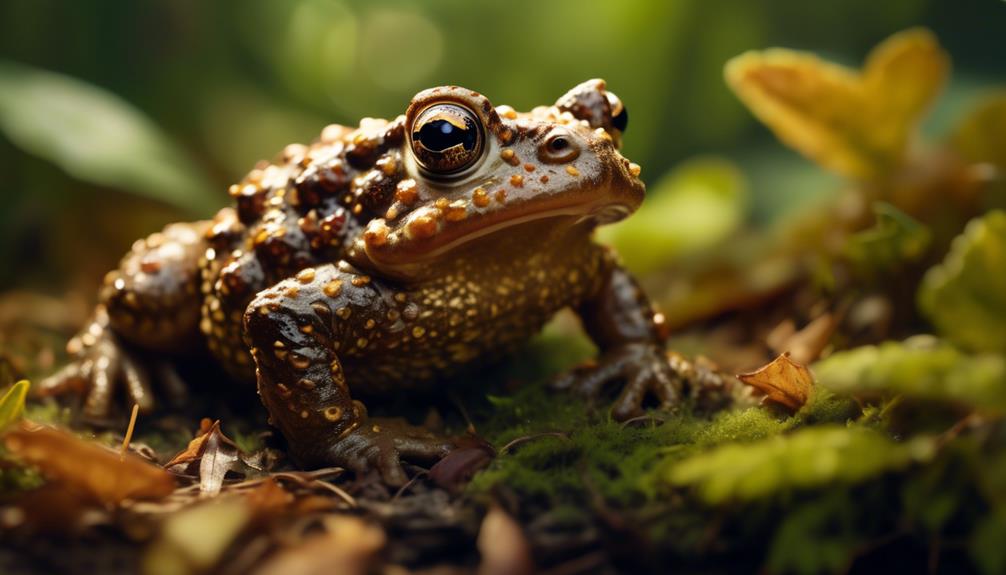
The Dwarf American toad, a smaller counterpart to the American toad, showcases unique characteristics and adaptations for survival. With a length of about 6cm, these toads are considerably smaller than their larger relatives. They are typically dark reddish in color with reduced or absent spots, although some specimens may have a white dorsal line on their backs. The ventral surface or belly is usually cream colored with a few dark spots. The Dwarf American toad overlaps with the southwestern portion of the American toad’s range. Despite their small size, these toads have adapted to their environment and have developed strategies to ensure their survival. The table below highlights some of the distinct features of the Dwarf American toad:
| Characteristic | Description |
|---|---|
| Size | Approximately 6cm in length |
| Coloration | Dark reddish with reduced or absent spots |
| Dorsal Line | Some specimens have a white dorsal line on their backs |
| Ventral Surface | Cream colored with a few dark spots |
| Range | Overlaps with the southwestern portion of the American toad’s range |
Habitat Requirements and Survival Strategies
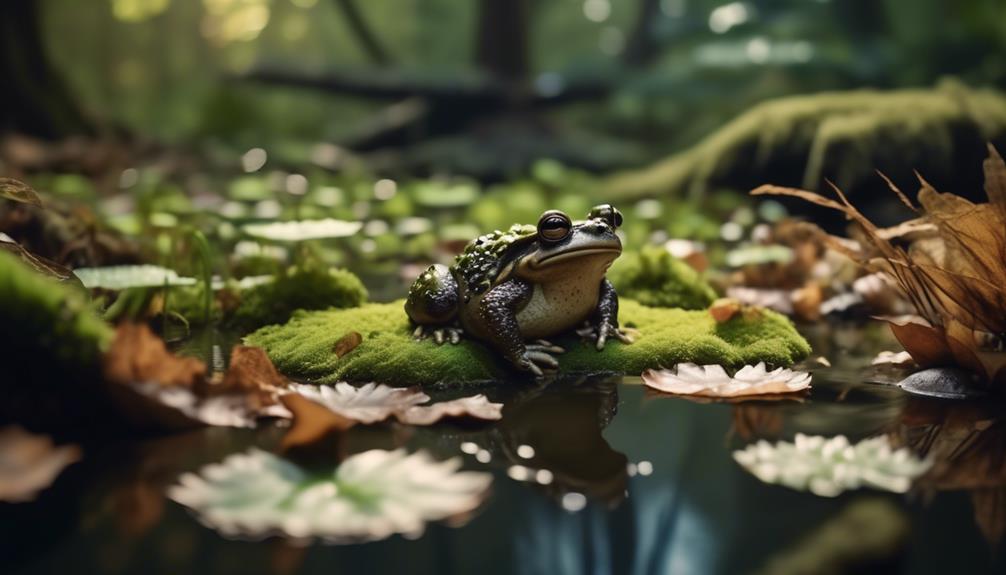
To ensure their survival, the Dwarf American toads have specific habitat requirements and employ various survival strategies. These include:
- Aquatic Habitats: Dwarf American toads rely on semi-permanent freshwater ponds for breeding and egg-laying. These habitats provide the necessary water for tadpoles to develop and metamorphose into toadlets.
- Dense Vegetation: Toads require dense vegetation, such as grasses, shrubs, and leaf litter, for shelter and protection from predators. The vegetation also provides a suitable environment for foraging and hunting insects.
- Camouflage: Dwarf American toads have a dark reddish color with reduced or absent spots, allowing them to blend in with their surroundings. Some individuals even have a white dorsal line on their backs, further enhancing their camouflage.
- Burrowing: During periods of extreme heat or cold, Dwarf American toads burrow into the ground to find refuge and regulate their body temperature. This strategy helps them survive unfavorable environmental conditions.
Frequently Asked Questions
How Long Does It Take for American Toad Tadpoles to Hatch From Eggs?
The American toad tadpoles hatch from eggs in a period ranging from 2 to 14 days. They have slender tails and black bodies, and can undergo metamorphosis and reach adulthood in approximately 50 to 65 days.
What Do American Toad Tadpoles Eat?
American toad tadpoles eat a diet consisting of microscopic bugs, ants, spiders, slugs, and worms. This diverse diet provides them with the necessary nutrients for growth and development into adulthood.
How Did American Toads Initially Arrive in North America?
American toads initially arrived in North America through an invasion from South America, likely before the formation of the Isthmus of Panama land bridge. It is believed that they arrived through rafting.
Do American Toads Hybridize With Any Other Toad Species?
Yes, American toads are known to hybridize with woodhousii toads in overlapping ranges. This phenomenon occurs when two different species of toads interbreed, resulting in offspring with mixed characteristics.
What Is the Average Size of a Dwarf American Toad?
The average size of a Dwarf American Toad is approximately 6cm. These smaller versions of American Toads have a dark reddish color with reduced or absent spots and a cream-colored belly with a few dark spots.
What Makes American Toads and Common Toads Fascinating Creatures?
American toads and common toads are fascinating creatures due to their unique defense mechanisms and folklore surrounding them. Common toad defense includes their ability to secrete toxins when threatened, while folklore often portrays them as mysterious and magical beings. Their interesting adaptations and cultural significance make them captivating creatures.
Conclusion
In conclusion, the captivating world of American toads offers a remarkable journey into their intriguing life cycle, biogeographical history, and diverse range of subspecies.
From their swift development as tadpoles to their transformation into toadlets, American toads captivate with their distinctive appearance and fascinating patterns of hybridization.
The Eastern American toad and the Dwarf American toad showcase the unique characteristics of these subspecies. Survival for both relies on specific environmental conditions, highlighting the importance of freshwater ponds, dense vegetation, and a steady supply of insects.

